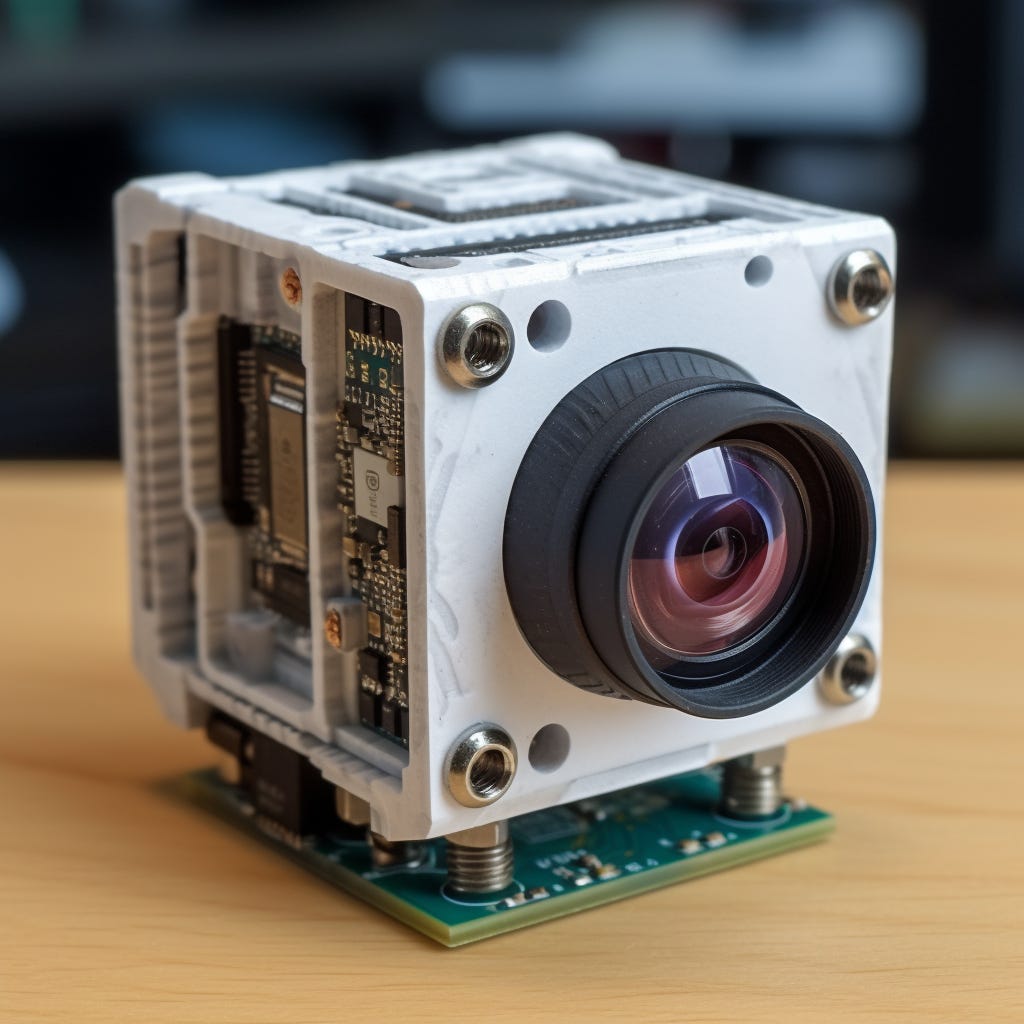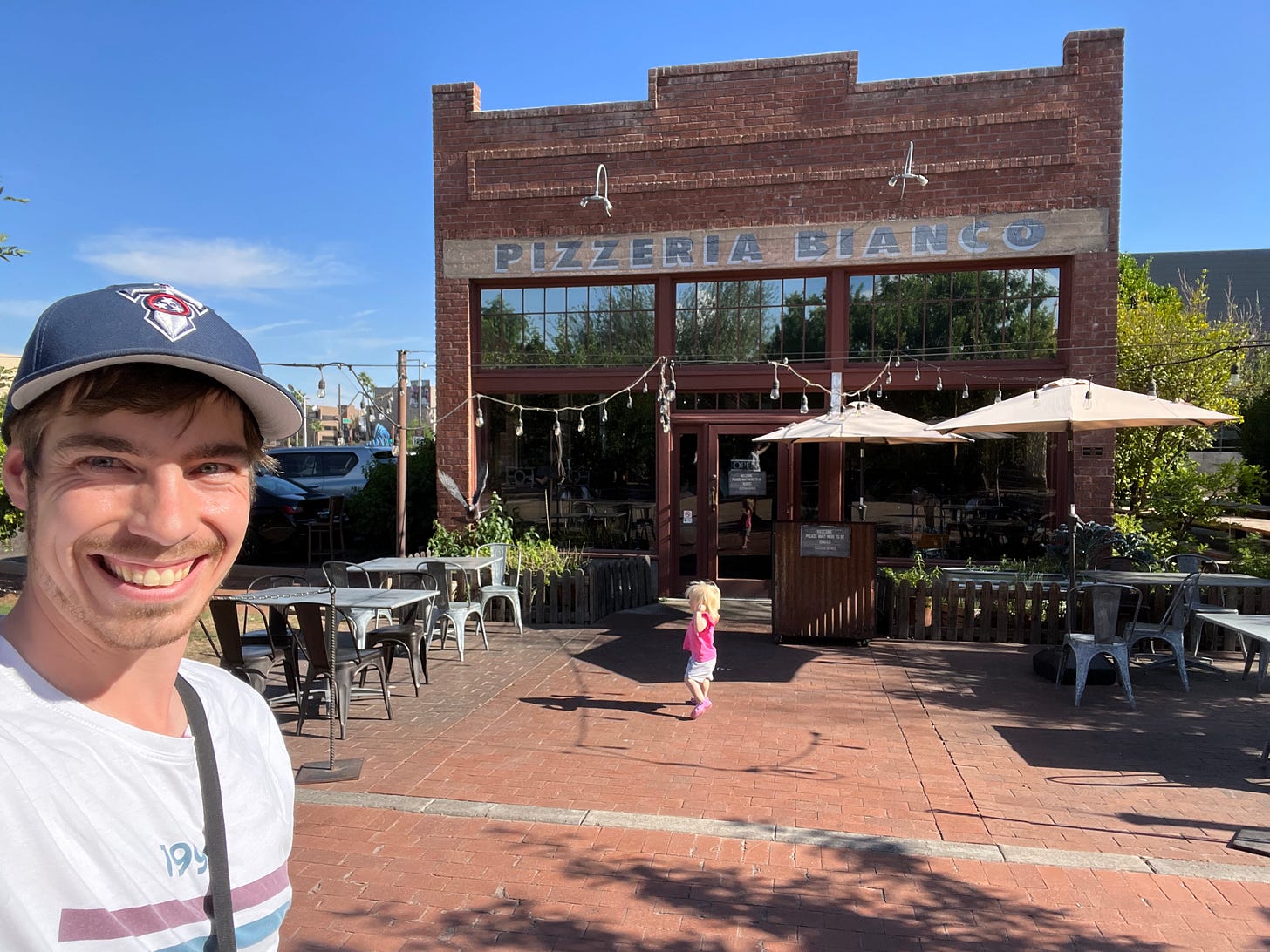Scialog Gets the Prototyping Mindset
Lessons from three years of scientific speed dating, sandboxed proposal writing, and Shark Tank-style science pitches
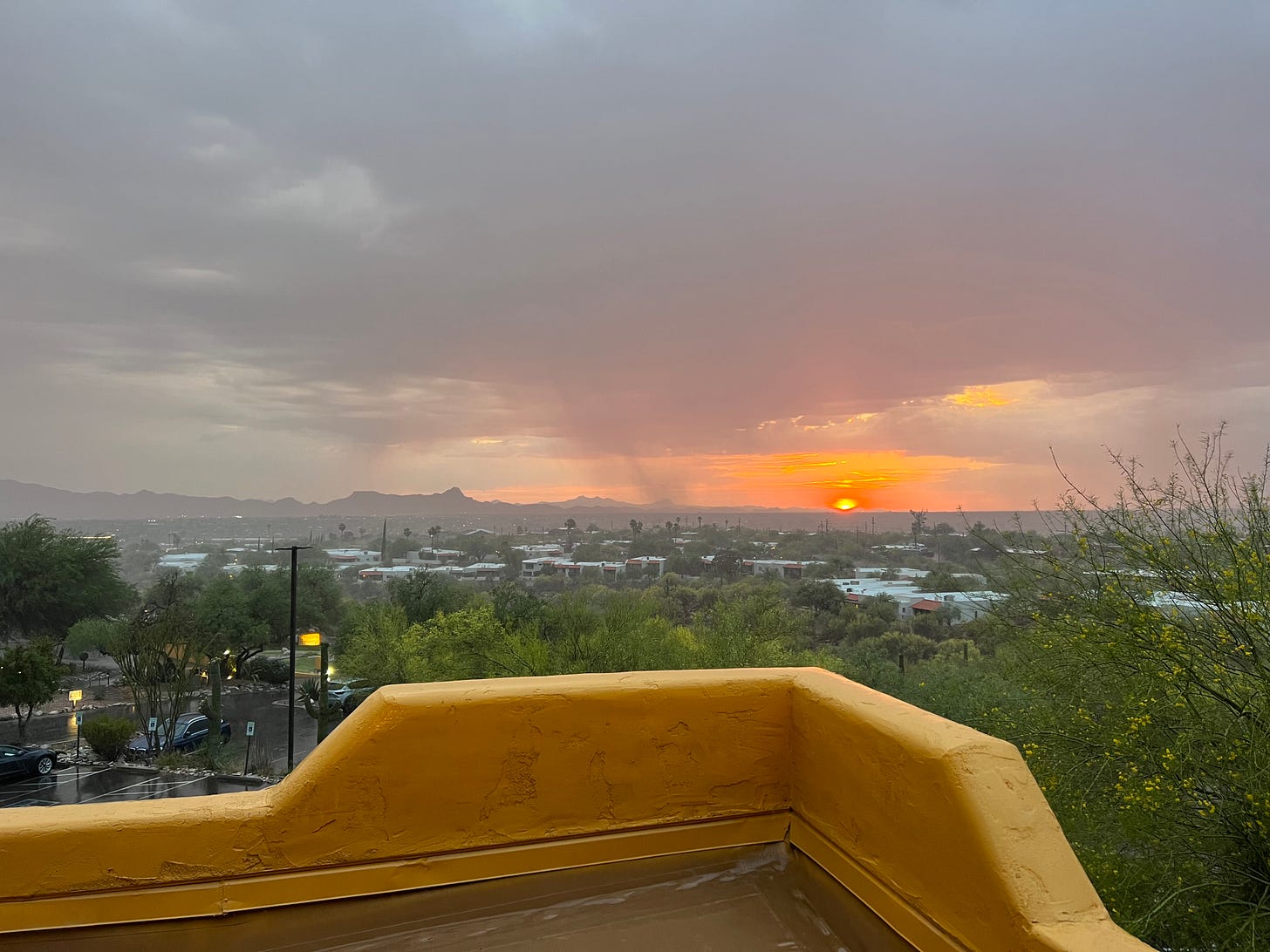
At the end of last week, I drove out to Tucson, AZ for the third and final meeting of Scialog: Advancing BioImaging. My experience as a Scialog Fellow over the past three years taught me a lot about how to think outside the box and treasure the kernel of a good idea without getting caught up in the minutiae. Of course, the details matter, but far too often we let them get in the way of our creative thought processes.
If you’re unfamiliar with Scialog or Research Corporation for Science Advancement (RCSA), the foundation that puts them on, you’re unlikely to know what on earth a Scialog is. Scialogs bring together around 50 early-career faculty and a group of senior facilitators for three annual meetings.
Scialog officially stands for Science + Dialog, but that only scratches the surface. To me, Scialog is best described as the mashup of a scientific conference, round table discussion, poster session, speed dating event with algorithmic matching, and Shark Tank episode. It’s great fun.
Three Lessons from Scialog
Today I want to reflect on some lessons I’ve learned as a Scialog fellow over the past three years with the hope that you might find ways to apply these lessons to your own life, even if you’re not a scientist or an academic. The Scialog model is an excellent template for stimulating creativity regardless of what you do. Here are three big-picture takeaways:
Thoughtful forced networking lower barriers for creative conversations.
Sandboxing idea generation forces a bias toward action and short circuits the often unhelpful critic in your head.
Sharing meals and space together creates opportunities for serendipity to strike.

In my view, Scialog is so successful because it models many aspects of a prototyping mindset. As a reminder, I’ve included a few of the different aspects in the image above. I’ll try to highlight how these connect with the various aspects of Scialog.
1. Thoughtful forced networking lower barriers for creative conversations.
The cornerstone of the three-day Scialog format is conversation and dialog. It is in the name, after all. Before you come to the conference, you fill out a survey indicating your interests in certain topics and also rating how familiar you are with the other Scialog fellows who are attending the meeting and their work. Then, RCSA has an algorithm that processes the survey results in order to cluster the attendees into groups based on their interest in certain topics.
During the meeting itself, there are two different types of small groups: discussion groups and mini breakouts. The discussion groups are larger groups of 8-10, facilitated by a senior expert in the field in order to direct the conversation. During each discussion group breakout, there are questions to spark the initial conversation, but there is no agenda. Critically, at the end of each discussion, all of the groups come back together to report back to the entire group of fellows about what they discussed and any conclusions.
The second type of group is the mini breakout. Here, you are matched with 1-2 other fellows and you consider what it might look like for you to collaborate. These groups, in contrast to the discussion groups, are often formed to maximize the distance between areas of expertise. These groups are a great example of radical collaboration.
For example, in my groups this year I was matched with a number of chemists who do probe development, something I know little to nothing about as an engineer living on the technology development side of the field. But, probes are critically important for the work I do and are something I should know more about! The forced mixing with folks from a different part of your field helps to break you out of the ruts of conversation that you might easily fall into if you were talking to other people who read all the same papers and do the same science that you do.
2. Sandboxing idea generation forces a bias toward action and short circuits the often unhelpful critic in your head.
After the first day or so of conversation, Scialog transitions into the second phase: the sandboxed grant writing competition. Now folks are on the hunt looking for more formal commitments from potential collaborators and you can smell the competitive juices in the air.
You have from noon on Saturday until 6:30 am on Sunday morning to put together a 2-page collaborative proposal with 1 or 2 other fellows at the conference about a new project that you think has the potential to have a significant influence on the field. Then, on Sunday morning you get 5 minutes to pitch the idea to the whole large group, Shark Tank-style. The submitted proposals are later evaluated and 10 or so are selected to receive awards of $50,000 per team member.
The proposal writing process is a great example of how Scialog embraces a prototyping mindset. The first day and a half are focused on a diverging thought process, encouraging wild brainstorming and ideation by mixing folks with others from different fields. Then, on Saturday, the proposal and pitch forces converging thinking, looking for ways to distill some wild ideas into a concrete project.
I love this part of Scialog. It was great fun to put together some crazy ideas with someone you just recently met and envision how you could put your brains together to do something creative. And the 5-minute pitch on Sunday morning is pretty fun too as you get a chance to get up in front of everyone and share your crazy idea. Everyone knows you’ve only spent less than 24 hours thinking about this, so it lowers the bar for folks thinking you’re crazy if the idea doesn’t have legs. But most of the time, if you look hard enough, the proposals all have a kernel of an idea that would be transformative.
3. Sharing meals and space together creates opportunities for serendipity to strike.
Scialog also makes the most of being together in person. My specific Scialog, Advancing BioImaging, was an interesting case study since the first year was held virtually over Zoom. While it was certainly better than nothing, the two subsequent years held in person made it clear just how much we lost by not being physically in the same place together.
While the group discussions and mini breakouts were of similar quality in the virtual format, all the interstitial space was lost. There was no serendipitous shoulder-rubbing with new people when you went to grab coffee or the types of casual conversations that help to build relationships over meals together. My coffee refill runs are pretty frequent so this has a particularly big impact on me.
This aspect of Scialog reminded me of another of my favorite academic conference models, Gordon Conferences. While Gordon Conferences are more focused on a slate of scientific talks, there is still space for lots of relationship building because of the shared meals and co-located housing arrangements.
Listen, I’m all about great science, but at the end of the day what makes this all valuable to me is people. Not just the people we are working to serve, whether they are patients, students, or the general public, but the people we are working alongside. The most meaningful outcome of Scialog for me was the number of new relationships I formed with my cohort.
Distilling the Lessons
As I reflect on the past three years of Scialog, I’m taking away some ideas that I hope to integrate into other aspects of my work as a faculty member. Here are a few. I hope they spark your curiosity as well!
Teaching
Create randomized small groups for students that rotate throughout the semester to gently force them to meet people they don’t know well.
Survey students at the beginning of the class to understand not only what they already know and what they are eager to learn, but who they do and do not know to enable intentional community building.
Create time-boxed ideation and brainstorming exercises where the goal is not polish, but the creativity of the idea.
Scholarship
Scialog taught me that good proposals can be written quickly and to focus on the quality of the idea. The rest of the supporting material, preliminary data, and potential pitfalls are of course important, but sometimes I think this creates a mental hurdle that prevents us from trying. Embrace a bias toward action and just write the grant. Every proposal you don’t submit is guaranteed to not get funded.
Get curious about people who might initially seem to have very little overlap with your area of expertise. Often these conversations can lead to creative ideas.
Wrapping Up
If you’re an early-career scientist, check out the list of current and upcoming Scialogs to check out and apply. But even if this doesn’t fit you, there is still a lot to learn from the Scialog model.
What aspect was most curious to you?
The Book Nook
When I arrived at Scialog this year I picked up these two books that they had out on the welcome table. I’m excited to check them out this summer. If you’re interested in either, they are both available online as PDFs for free. You can find the PDFs linked directly below, or the full catalog of free books published by RCSA here.
The Professor Is In
I’ve already told you about how I love the sandboxed proposal writing competition at Scialog. So fun. There are a variety of ways that the teams come together—some gel from the engineered speed dating sessions where you sit down and chat with assigned conversation partners for 20 minutes and imagine what it might look like to collaborate together. Other teams emerge organically out of dinner conversations or in the evening Starlight Café time on the rooftop open area.
This year, I teamed up with Sapun Parekh to pitch an idea for a 3d-printed scientific imaging platform designed to help broaden access to biomedical imaging and train the next generation of scientific imaging developers and users. Sapun, who is an Assistant Professor of Electrical and Computer Engineering at UT Austin, had teamed up with me last year to pitch a very different idea that ultimately wasn’t funded. This year we went back to the drawing board to come up with a completely new idea to fill what we see as an important gap in the image science pipeline.
Technology-wise, the idea was based around a Raspberry Pi and Raspberry Pi Camera surrounded by a 3d-printed mount and cartridge system which will allow users to swap in different optical modules. Some of the initial modules we proposed were simple microscopy applications like brightfield and darkfield imaging, fluorescence imaging with cheap color filters and LEDs for excitation, and diffraction gratings for simple spectroscopic measurements.
We’ll need to patiently wait to hear back until the end of June to know whether this proposal will get funded, but we had a great time putting it together and an even better time pitching it on Sunday morning.
My favorite thing about Scialog proposals is that they offer the opportunity to embrace the playfulness which drew many of us to science and engineering in the first place. As we get caught up in the details of grant writing, publishing, and the slow daily march of progress in the lab it’s sometimes easy to lose the wonder of it all. The process of proposing a new idea with a new friend is a welcome breath of fresh air.
Leisure Line
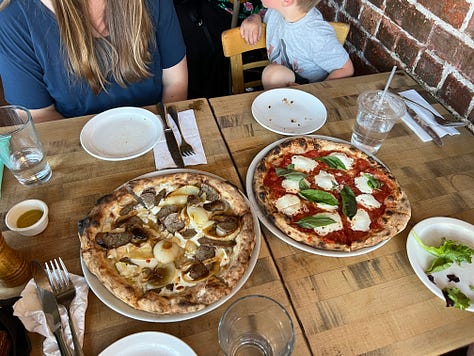
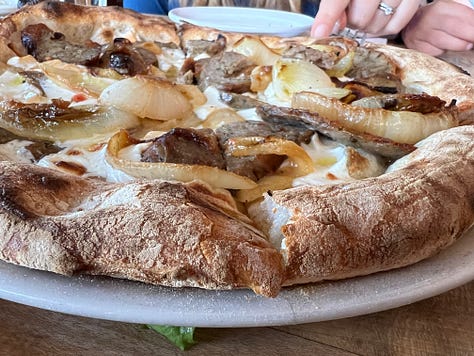

On the way to Tucson, we stopped for a night in Phoenix. I’d been excited to go and visit Pizzeria Bianco while we were there after seeing Chris Bianco featured on Chef’s Table: Pizza earlier this year. The pizza didn’t disappoint. Still doesn’t beat Pepe’s or Sally’s but boy, that was a good sauce and crust. 8/10.
Still Life
A shot of a beautiful jellyfish at the Odysea Aquarium near Phoenix. Highly recommend checking the aquarium out if you are ever in the area!






